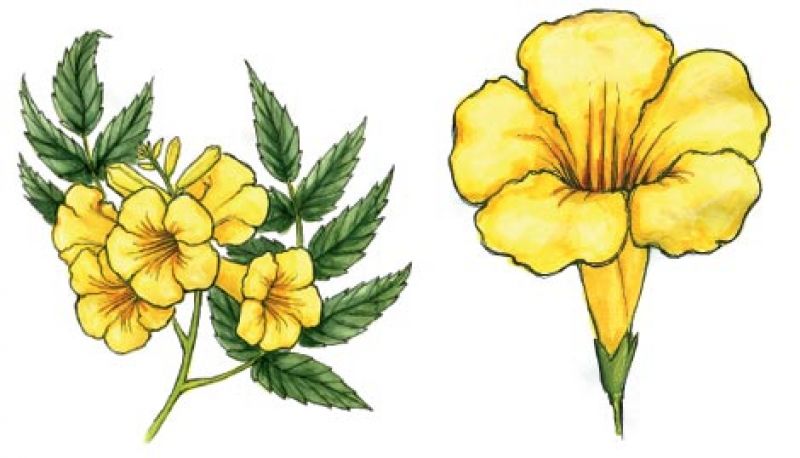
Here’s to the smack of vivid, solar hues outshining fall and winter’s cooler climes. These technicolor trumpets are members of the begonia family and are often seen lazing over picket fences and lighting up otherwise conservative corners of evergreen gardens. Read on for more on the showboating blooms:
Common Name: Yellow bells, yellow elder, among others
Type: Flowering perennial shrub
Zones: 8-11 Size: 3-6 feet high, 3-4 feet wide
Exposure: Full or partial sun Water
Needs: Minimal, drought resistant
Drainage: Requires good to excellent drainage
Soil: Various, including rocky, limestone, sand, and loam soils
Blooms: Fall and winter
Propagation: Germinates readily in sandy soil, cuttings root easily
Uses: Attractive accent shrub, attracts hummingbirds
Grow from seed in fertile, well-drained soil or in large containers.
Give it space (24 to 36 inches), and don’t plant in the front of the flowerbed, as it will likely trump other plants in size.
Dig planting hole two to three times as large as the root ball.
Water container-grown plants sparingly—yellow bells don’t like wet feet.
Feed with a diluted water-soluble 20-20-20 or Host agro fertilizer every other week.
Remove seedpods as they form to keep flowers producing; save some for planting indoors in the winter.
Prune out frozen stems in late winter or early spring.
Folk medicine touts yellow bell extracts as a remedy for symptoms of diabetes and gastrointestinal problems.
Pair with... structured shrubs that will offer a border for yellow bells’ asymmetrical shape; other hummingbird-attracting plants like Bleeding Hearts, Red Salvia, and Mexican Bird of Paradise.